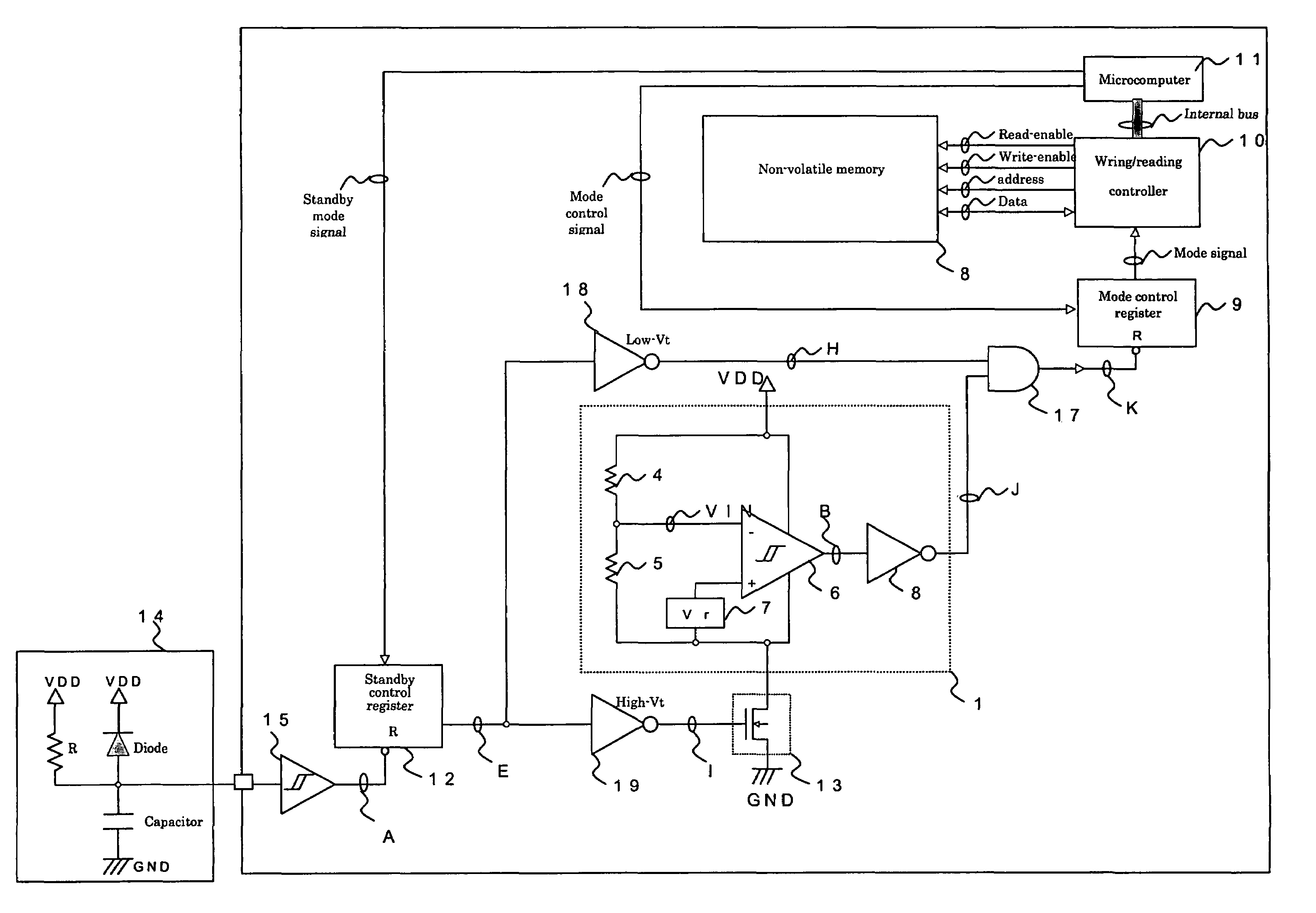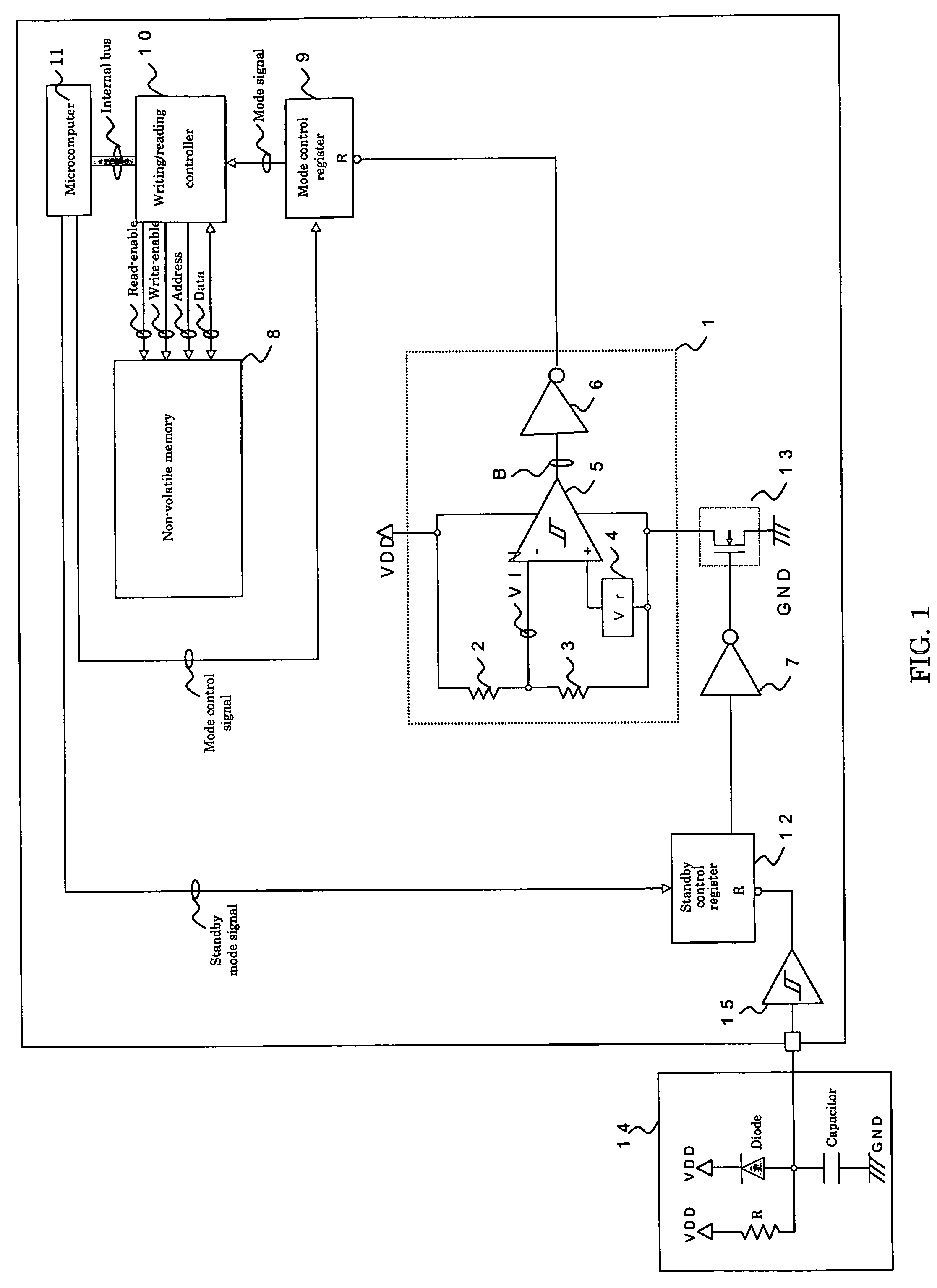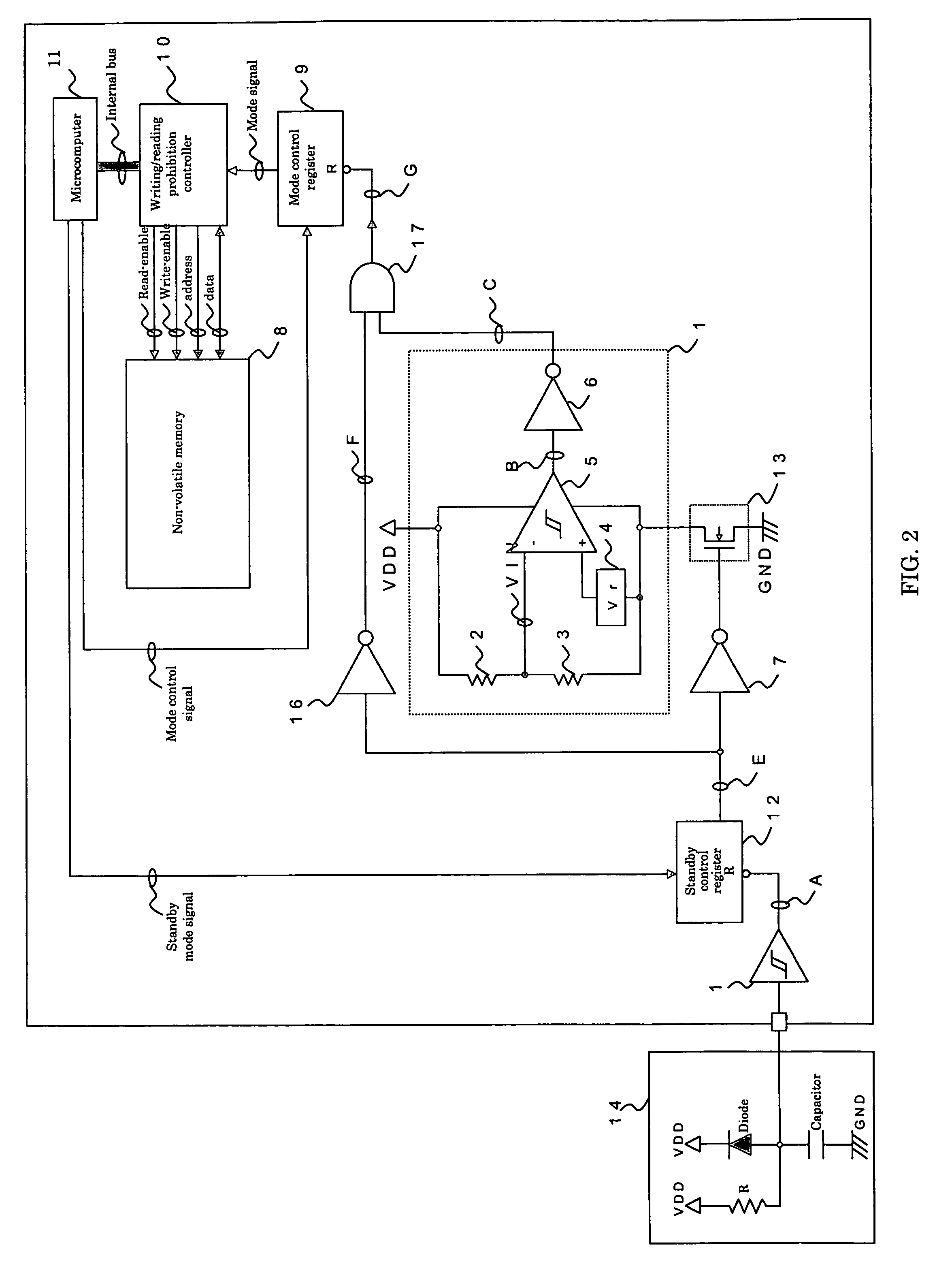Circuit for prevention of unintentional writing to a memory, and semiconductor device equipped with said circuit
a technology for unintentional writing and memory, which is applied in the direction of unauthorized memory use protection, error detection/correction, instruments, etc., can solve the problems of inability to ensure the prescribed data holding characteristics, the non-volatile memory becomes unstable in operation, and it takes a significant amount of time to change the system back to the default setting
- Summary
- Abstract
- Description
- Claims
- Application Information
AI Technical Summary
Benefits of technology
Problems solved by technology
Method used
Image
Examples
first embodiment
[0032]FIG. 1 shows an example of a circuit for prevention of unintentional writing to a memory according to the invention. Reference numeral “1” denotes a low-voltage detection circuit which detects a power supply voltage (VDD) drop, “2” and “3” denote resistances which divide the power supply voltage VDD, “4” denotes a reference voltage generating circuit which generates a reference value Vref as a voltage detection level, “5” denotes a comparator which compares the midpoint voltage of the resistance 2 and the resistance 3 with the reference voltage Vref, “6” denotes an inverter which inverts the output signal of the comparator 5, “7” denotes a second inverter, “8” denotes a nonvolatile memory, “9” denotes a mode control register which controls the setting of writing to and reading from the nonvolatile memory 8, and is reset by the output signal of the low-voltage detection circuit 1, “10” denotes a writing / reading controller which outputs a read-enable signal, a write-enable signa...
second embodiment
[0058]FIG. 3 is a block diagram showing a third, preferred embodiment of the present invention. This embodiment differs from the second embodiment shown in FIG. 2 in that the inverter 16 shown in FIG. 2 is replaced with a Low-Vt inverter 18 and that the inverter 7 shown in FIG. 2 is replaced with a High-Vt inverter 19. The aforementioned “Low-Vt” and “High-Vt” means a “low-threshold” and a “high-threshold,” respectively.
[0059]The Low-Vt inverter 18 becomes an “L” level at a lower input voltage because of the low-threshold as compared with an inverter having a standard threshold. Accordingly, the signal H which is an output signal of the inverter 18 is more biased to becoming an “L” level as compared with an inverter having a standard threshold and therefore more frequently outputs a reset signal to mode control register 9.
[0060]The High-Vt inverter 19 would not become an “L” level until the input voltage becomes higher because of the high-threshold as compared with an inverter havin...
PUM
 Login to View More
Login to View More Abstract
Description
Claims
Application Information
 Login to View More
Login to View More - R&D
- Intellectual Property
- Life Sciences
- Materials
- Tech Scout
- Unparalleled Data Quality
- Higher Quality Content
- 60% Fewer Hallucinations
Browse by: Latest US Patents, China's latest patents, Technical Efficacy Thesaurus, Application Domain, Technology Topic, Popular Technical Reports.
© 2025 PatSnap. All rights reserved.Legal|Privacy policy|Modern Slavery Act Transparency Statement|Sitemap|About US| Contact US: help@patsnap.com



